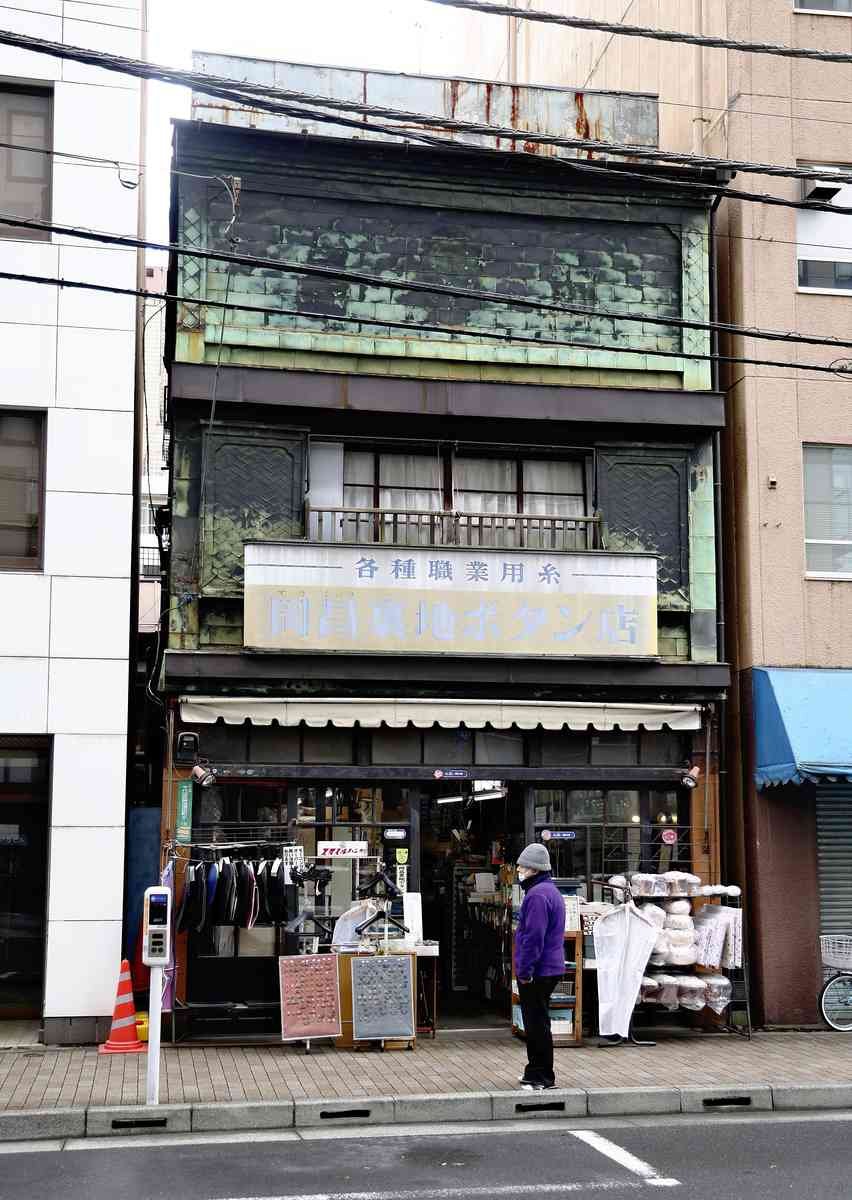February 18, 2025
TOKYO – A distinctive building constructed in 1928 stands on the Yanagihara-dori street along the Kanda River, a few minutes’ walk south from JR Akihabara Station in Tokyo.
Copper plates and other materials cover the front of Okasho Uraji Botan Ten, a fabric and button store which doubles as a home.

The exterior of Okasho Uraji Botan Ten. PHOTO: THE YOMIURI SHIMBUN
“Kanban kenchiku” — which literally means “billboard architecture” — is an architectural style in which buildings are decorated like billboard. The style is rare in contemporary times but was common during reconstruction in the years following the Great Kanto Earthquake in 1923.
Thanks to its attractive appearance, Okasho Uraji Botan Ten has gained a lot of attention, even receiving requests to be a filming location for a movie.
Inside the store, you will find a myriad of specialized materials for men’s clothing, such as buttons and spools of thread, some of which are out of production.

Buttons sold at the store. PHOTO: THE YOMIURI SHIMBUN
“Many customers come from as far as Chiba and Saitama prefectures to buy things they can’t find at other stores,” said Takeo Oka, 80, the owner of the store.
The Yanagihara-dori street is said to have been lined with stalls since the Edo period (1603-1867), when it became known as a “used clothing town.”
Oka’s grandfather opened a secondhand clothing store in 1897, in the middle of the Meiji era (1868-1912). After the building was severely damaged in the Great Kanto Earthquake, he rebuilt it with a fire-resistant form of billboard architecture and continued to run it.
The street eventually evolved into a “clothing town,” with custom-made suits becoming all the rage after World War II.
“It was a time when you were only considered a full-fledged member of society if you’d gotten a suit made with your starting salary,” Oka said.
Sellers of custom-made suits and material stores began businesses in the neighborhood, prompting Oka’s store to start dealing in buttons and threads.

The shop has many suit linings. PHOTO: THE YOMIURI SHIMBUN
As inexpensive, ready-made clothes became more popular, the number of tailor shops declined. But Oka, who has worked at the store since he was young, said he has never thought about getting another job.
He did not take over from his father until he was in his 60s. He continues to operate the small business with only a few customers a day.
He waits for customers while watching TV in the store, makes calls to purchase goods for his shop and introduces his products to visitors with a friendly smile. He has become a fixture of the town.
“I enjoy it because it’s a business that allows me to talk to all kinds of people in the town where I was born and raised,” he said. He intends to continue the business for as long as he can.
***
Okasho Uraji Botan Ten
Address: 2-15 Kanda-Sudacho, Chiyoda Ward, Tokyo
Access: 2-minute walk from Iwamotocho Station on the Toei Shinjuku Line, 5-minute walk from JR Akihabara Station
Hours: 9 a.m.-6 p.m. on weekdays, 9 a.m.-5 p.m. on Saturdays. Closed on Sundays.

